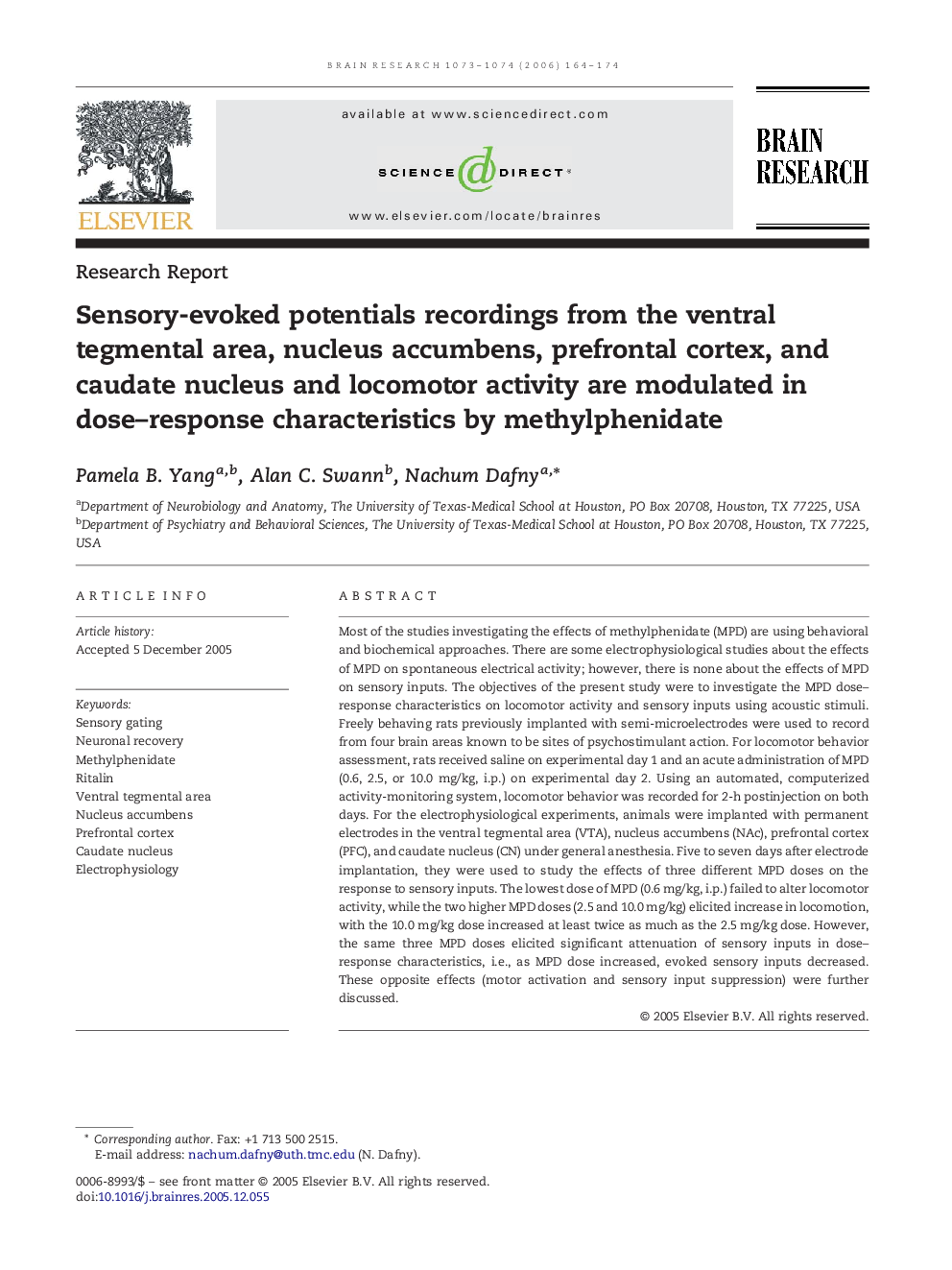| Article ID | Journal | Published Year | Pages | File Type |
|---|---|---|---|---|
| 4333335 | Brain Research | 2006 | 11 Pages |
Most of the studies investigating the effects of methylphenidate (MPD) are using behavioral and biochemical approaches. There are some electrophysiological studies about the effects of MPD on spontaneous electrical activity; however, there is none about the effects of MPD on sensory inputs. The objectives of the present study were to investigate the MPD dose–response characteristics on locomotor activity and sensory inputs using acoustic stimuli. Freely behaving rats previously implanted with semi-microelectrodes were used to record from four brain areas known to be sites of psychostimulant action. For locomotor behavior assessment, rats received saline on experimental day 1 and an acute administration of MPD (0.6, 2.5, or 10.0 mg/kg, i.p.) on experimental day 2. Using an automated, computerized activity-monitoring system, locomotor behavior was recorded for 2-h postinjection on both days. For the electrophysiological experiments, animals were implanted with permanent electrodes in the ventral tegmental area (VTA), nucleus accumbens (NAc), prefrontal cortex (PFC), and caudate nucleus (CN) under general anesthesia. Five to seven days after electrode implantation, they were used to study the effects of three different MPD doses on the response to sensory inputs. The lowest dose of MPD (0.6 mg/kg, i.p.) failed to alter locomotor activity, while the two higher MPD doses (2.5 and 10.0 mg/kg) elicited increase in locomotion, with the 10.0 mg/kg dose increased at least twice as much as the 2.5 mg/kg dose. However, the same three MPD doses elicited significant attenuation of sensory inputs in dose–response characteristics, i.e., as MPD dose increased, evoked sensory inputs decreased. These opposite effects (motor activation and sensory input suppression) were further discussed.
